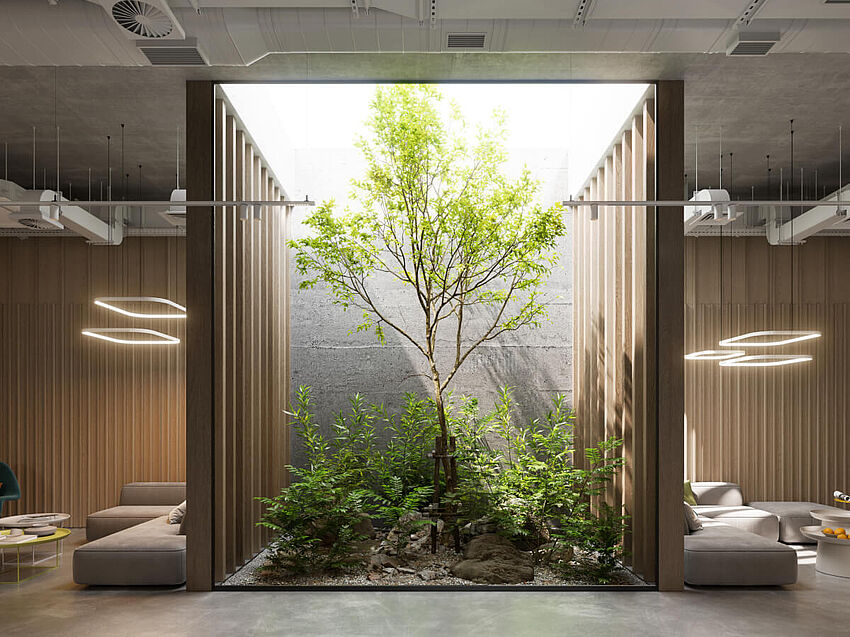A look into nature reveals: It produces in excess and makes new from old. This is exactly what the "cradle to cradle" approach endeavors. The process engineer Michael Braungart and the architect William McDonough developed this design concept in the 1990s. Since then, they have been working on additional approaches at the EPEA, the Institution for International Environmental Research, in Hamburg. Read on in this article to find out what's behind the "cradle to cradle" principle and how it is used in practice.
Cradle To Cradle in Architecture
The term is English-based. It's about the targeted selection of materials for construction projects, which can go through potentially infinite life cycles. Unlike recycling or the concept of eco balance, cradle to cradle takes things a step further. Energy saving alone falls short and also has negative effects, such as the sick building syndrome where office employees in particular feel ill after staying in buildings for extended periods of time. Cradle to cradle in architecture, however, has the goal of utilizing the environment instead of only reducing damaging effects. The concept is based on three principles: the understanding of waste as food, the use of renewable energies and the support of diversity.
Biological and technical production cycles
The concept distinguishes between two cycles. The biological cycle consists of consumables that are returned to nature after their use. Consumer goods play a role in the technical cycle. The reuse of materials is a focus already during the design of these products. Manufacturers no longer sell their goods, but rather they provide them and then take them back in order to reuse them.
Using renewable energy sources
Conventional energy sources, such as fossil fuels or nuclear power, have numerous disadvantages, because the consequences of their use are a burden on future generations. Wind and solar energy, biomass or geothermal energy, on the other hand, are always available and are renewable. In this way, power and heat can be sustainably produced for the operation of buildings or plants.
Supporting diversity
The concept of "cradle to cradle" takes into consideration both economic as well as environmental and social aspects when choosing materials and building materials. It allows for a wide range of perspectives on the creation and use of products. In this way new ideas are generated that go beyond conventional methods and viewpoints.
Practical example: the cycle pavilion in Hamburg
During the Climate Week 2011 in Hamburg, the architectural firm Partner & Partner constructed a building according to the cradle-to-cradle-principle on the city hall square. The so-called cycle pavilion with an area of 75 square meters had a limited period of use. It served as an exhibition and vent venue as well as a spatial sculpture. In the dark, it shone in a dull green light thanks to lighting with LED lights. The architects and engineers involved wanted to present the life cycle of a building in a compressed form with the pavilion: from the creation to the construction and use to the dismantling.
Naturally growntree branches from the surrounding forests served as the materials for this project. They formed the supporting structure and facade of the building. Partner & Partner chose them specifically for the useful life. The assembly took place with wooden dowels and hemp ropes. After the disassembly, the wood was chopped and returned to the forest as a natural nutrient solution. The inner walls were covered with textile fabrics and the floor was covered with synthetic carpet tiles. After disassembling the building, the manufacturer took back the latter and used it for the production of other floor coverings.
Findings can be transferred to permanent buildings
The cycle pavilion illustrates the principles of "cradle to cradle" in architecture: The building materials used were returned to the biological or technical cycle. The building was nearly CO2 neutral due to the use of renewable energy sources. In addition, it showed how the overall environmental environmental balance can be optimized. The findings can also be transferred to permanent building structures. For architects, this results in completely new fields of activity in the field of nutrition management, which go far beyond the construction industry.




